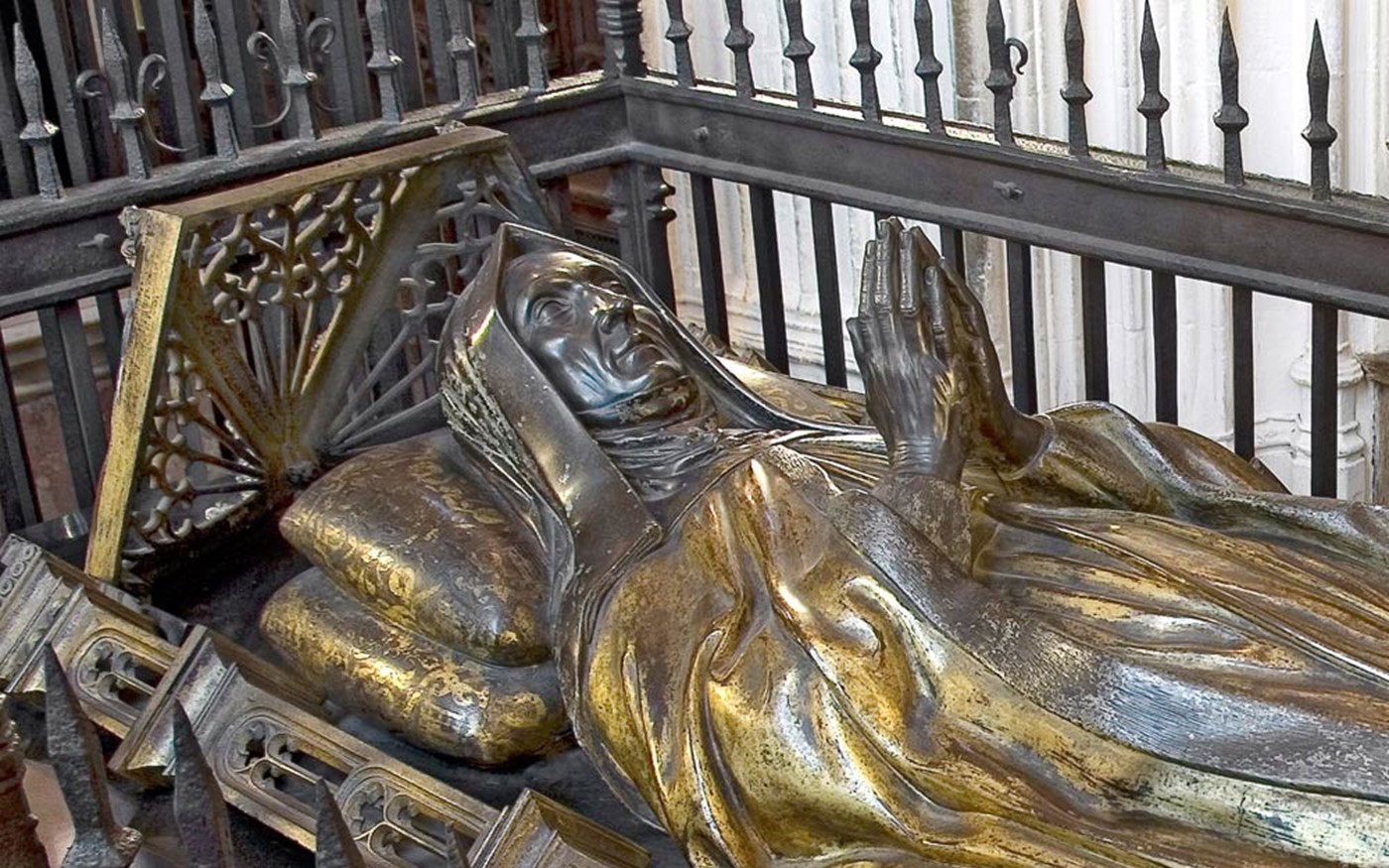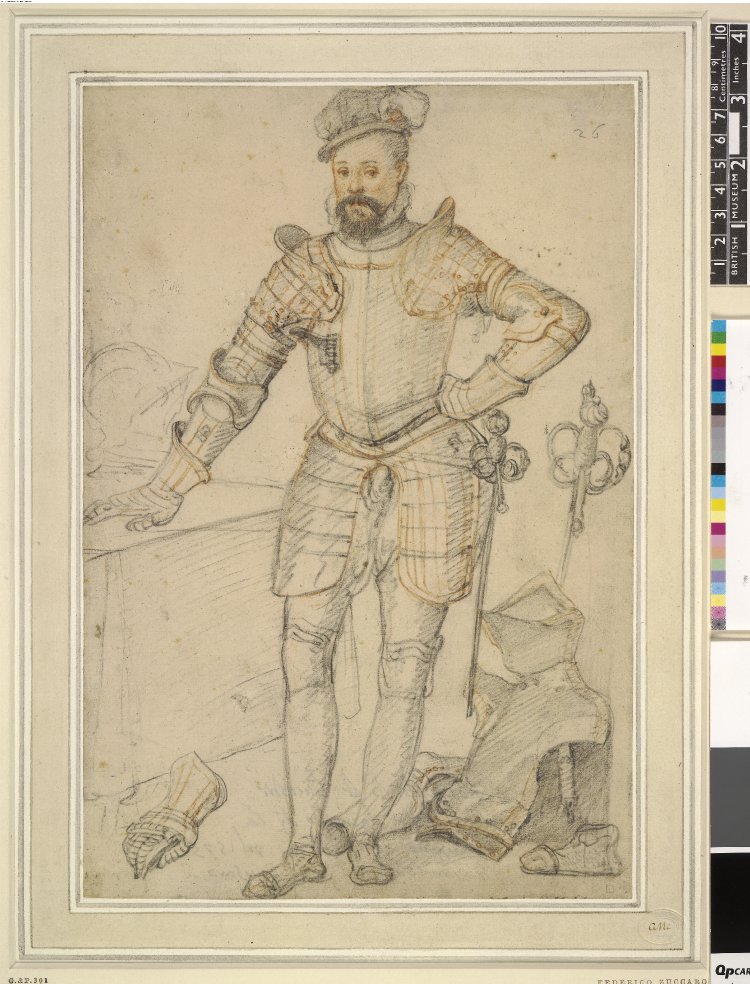Despite the Church of England’s break from Rome during the sixteenth century, the fractured religious relationship between Tudor England and the Papacy did not necessarily reflect the state of artistic liaisons between England and the Italian Peninsula. Travel, diplomacy, merchant trading and the individual requirement for goods of a certain quality, ensured that the patronage of artists, sculptors and other skilled artisans from Italy continued throughout the tumultuous Tudor period.
Henry VII had clearly been an advocate of the quality of Florentine cloth, as prior to his death, he bequeathed various vestments of cloth of gold to Westminster Abbey, that were, “made, brought and provided at Florence in Ittalie.” He perhaps also relied somewhat on the Modenese craftsmanship of Guido Mazzoni when it came to obtaining a visual representation of his second son, Henry Tudor.
If in fact the image shown above does represent Prince Henry, when the boy eventually became king, following the deaths of his elder brother, Arthur and subsequently his father, the Tudor tradition of patronising Italian artists continued during his reign.
In 1509 a suitable sculptor was required to create a lavish tomb for King Henry VIII’s Grandmother, Margaret Beaufort, Countess of Richmond and Derby, who had died just a few days after Henry VIII’s coronation. Accordingly, Pietro Torrigiani, a Florentine and contemporary of Michelangelo, was given the commission.
In 1512, Torrigiani was called upon once again, to fashion an even more impressive memorial to Henry VII and Elizabeth of York, Henry VIII’s mother and father, who had lain in repose in an underground vault located in the Lady Chapel of Westminster Abbey since 1509. The former king and queen’s likenesses were likely fashioned from death masks: the mask of the former being accomplished by Torrigiani himself. The sculptor also produced a portrait bust from the king’s death mask, which depicts him as fit and well, rather than aged and gaunt.
The influence of Italian Renaissance style continued within the Lady Chapel, in the form of a magnificent altar, created by Torrigiani in marble and terracotta. The altar was subsequently destroyed in the seventeenth century, during the interregnum, although fragmentary evidence suggests that it was made up of four columns, topped by a canopy on which glazed terracotta angels flanked the royal coat of arms.
Following the deaths of Henry VIII and his sole legitimate male heir, Edward VI, henry’s eldest daughter, Mary Tudor became queen. Mary was a staunch Roman Catholic (as was her mother, Catherine of Aragon) and accordingly, she was betrothed to Philip II of Spain.
In 1544 Mary’s likeness appeared on a portrait medal, produced by Giacomo Nizzola (otherwise known as Jacopo da Trezzo), an Italian engraver and sculptor. During the next year, the Royal Mint would go on to circulate silver shillings, cast from a die designed by the very same Italian craftsman. Jacopo also appears to have been responsible for the creation of a sardonyx cameo, depicting Philip II of Spain, which is still be located in the Royal Collection.
In 1558, when Mary I died without issue, her younger sister, Elizabeth Tudor (daughter of Henry VIII and Anne Boleyn) became queen. In comparison to her royal predecessors, Elizabeth I’s involvement in commissioning Italian art appears brief. In 1575, Federico Zuccaro was tempted to England for three months, after being recommended to one of the queen’s favourites, Robert Dudley. During his stay in the country, he produced a full-length chalk drawing of Elizabeth and a companion portrait of Dudley also.
Richard E Goldthwaithe, The Economy of Renaissance Florence, Baltimore, The Johns Hopkins University Press, 2009, p.132.
The Will of King Henry VII, London, 1775.
Inventory of Henry VIII’s Assets on His Death, Harley Ms. 1419 A, f.206, British Library.
Images: Raphael Santi, Saint George and the Dragon, 1504-1506, oil on panel, Andrew W. Mellon Collection. National Gallery of Art, Washing ton D,C. © 2018 National Gallery of Art.
Guido Mazzoni, Henry VIII When a Young Boy? c.1498, painted and gilded terracotta, Royal Collection Trust.
Pietro Torrigiani, Tomb of Margaret Beaufort, Countess of Richmond and Derby, Lady Chapel, 1509, marble and bronze, Westminster Abbey, London. © 2018 Dean and Chapter of Westminster
Pietro Torrigiani, Henry VII Funeral Effigy Head, 1509, plaster and paint, Westminster Abbey, London. © Dean and Chapter of Westminster 2018.
Pietro Torrigiani, Bust of Henry VII, 1509-1511, painted terracotta, Victoria and Albert Museum, London. © Victoria and Albert Museum 2017.
Jacopo Nizolla da Trezzo, Cast and chased gold medal of Mary I, 1554, gold, The British Museum, London. © The Trustees of the British Museum 2018.
1 Shilling, Philip and Mary, (Obverse), 1555, silver, Victoria and Albert Museum, London. © Victoria and Albert Museum 2017.
Attr. Jacopo Nizolla da Trezzo, Philip II of Spain Cameo, 16th century (mount 18th century), sardonyx and gold, Royal Collection Trust.
Federico Zuccaro, Portrait of Robert Dudley, Earl of Leicester, 1575, black and red chalk on paper, British Museum, London. © The Trustees of the British Museum 2018.
Federico Zuccaro, Portrait of Queen Elizabeth I, 1575, black and red chalk on paper, British Museum, London. © The Trustees of the British Museum 2018.
Posted by Samantha Hughes-Johnson.










